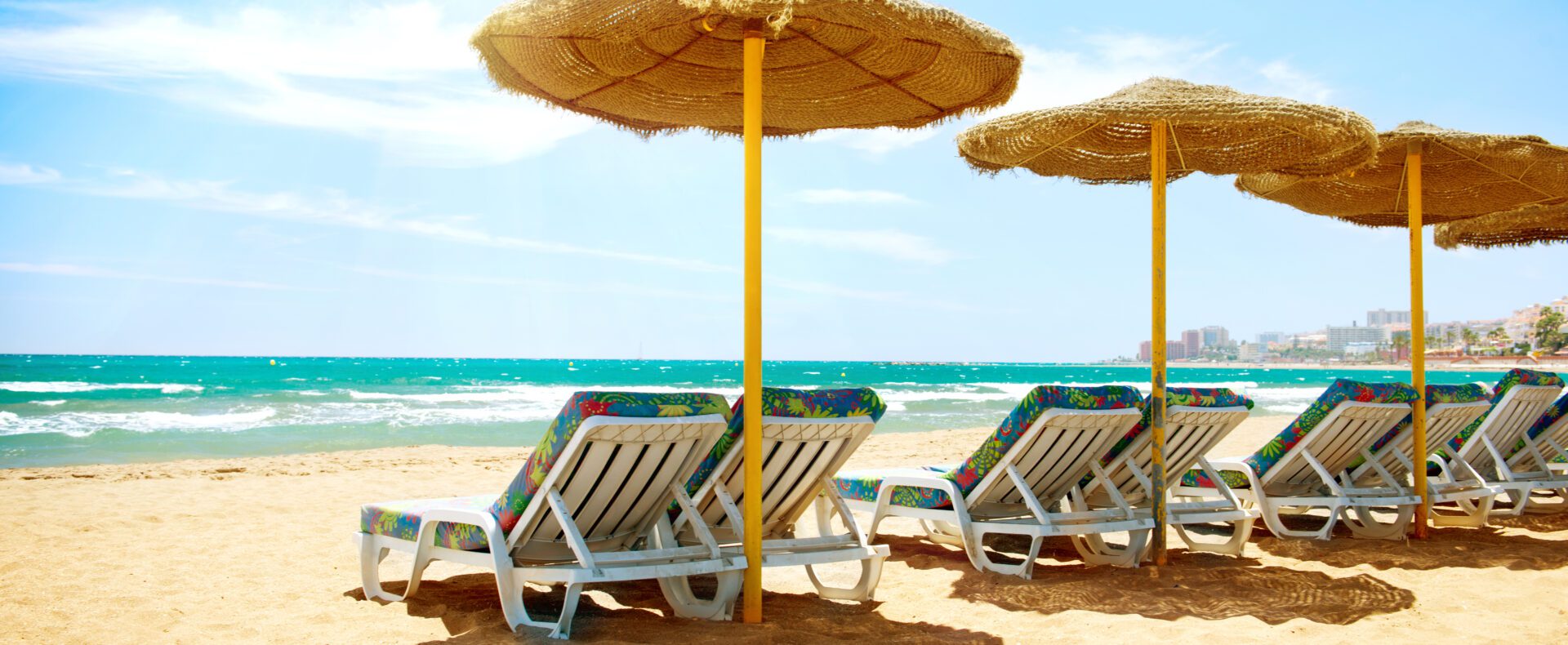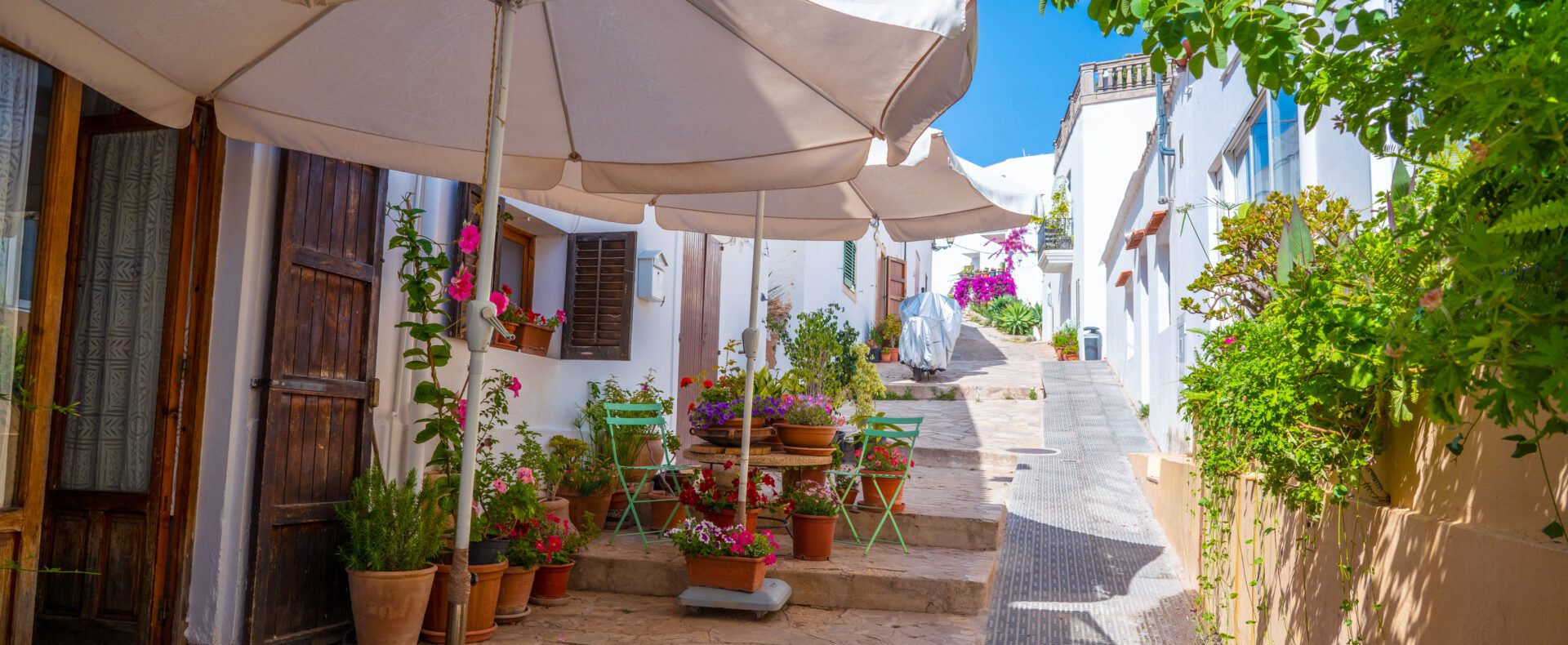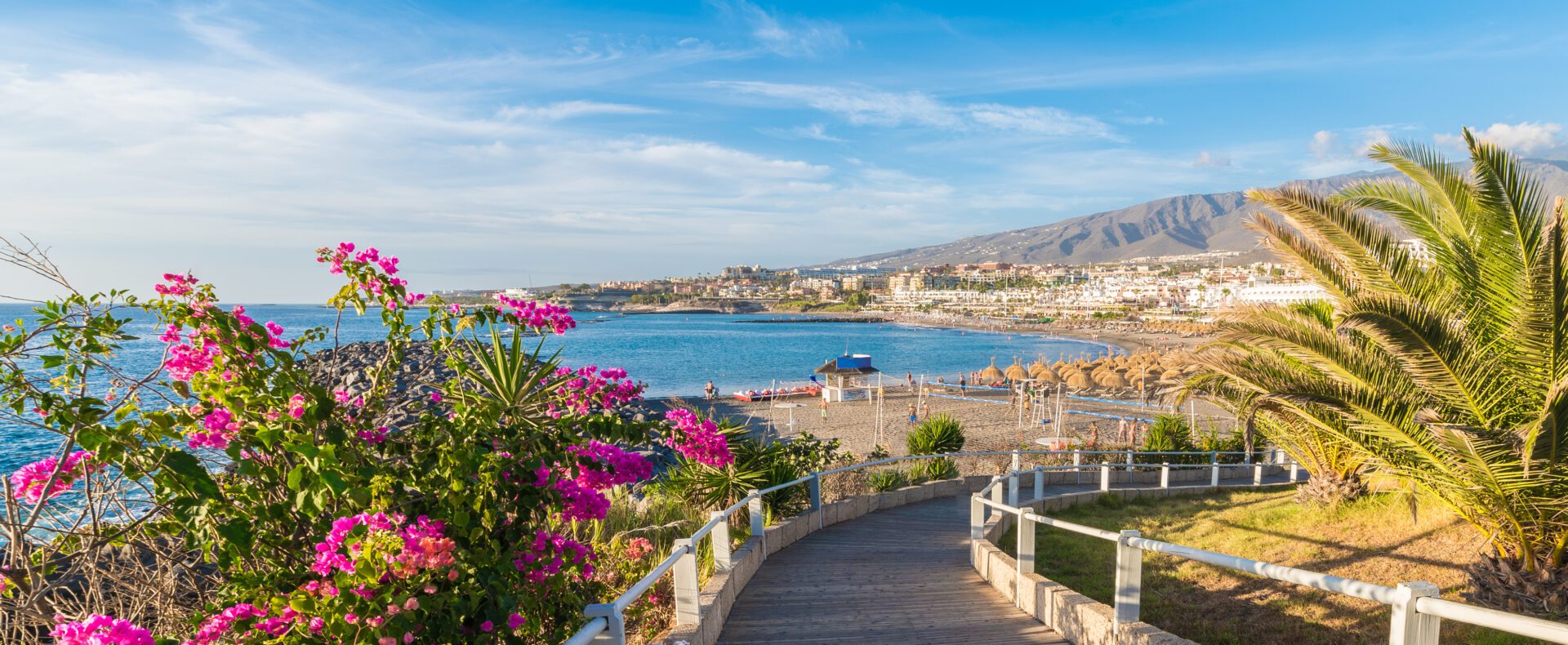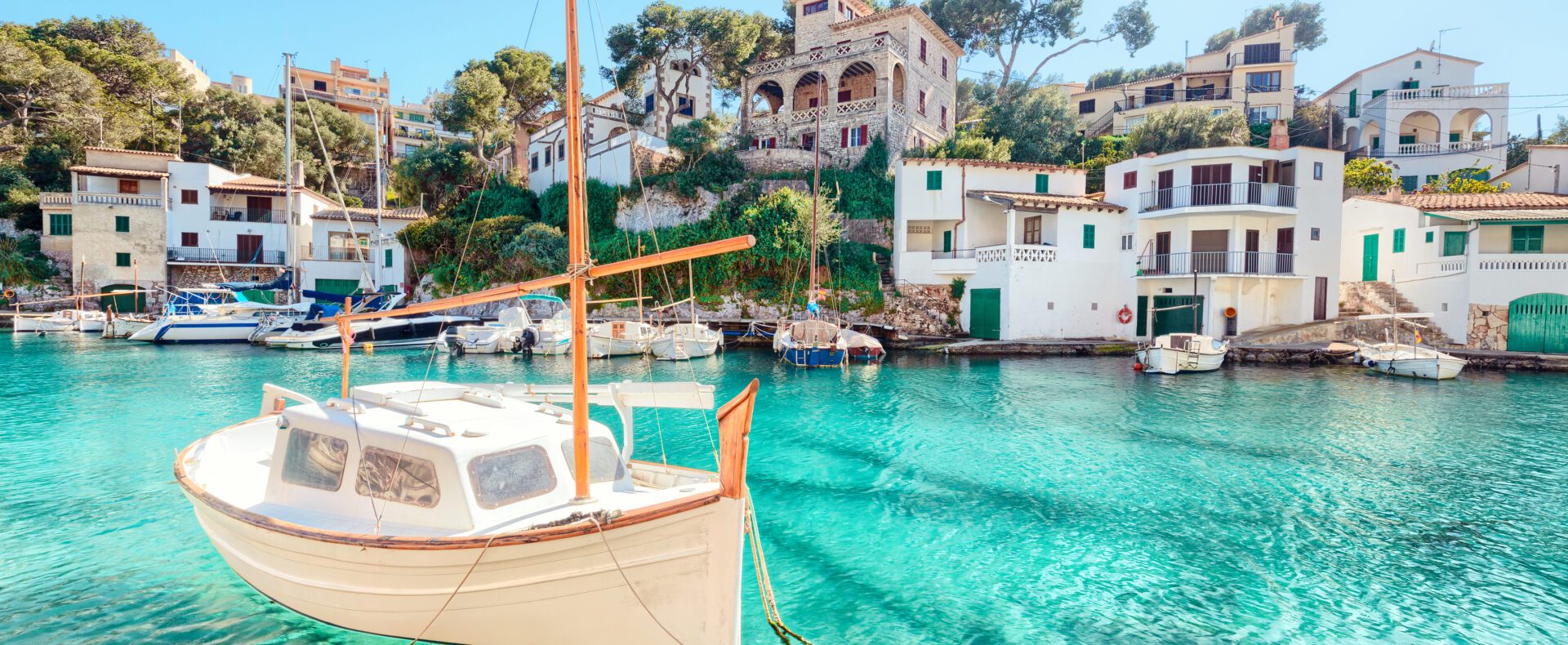Change Your Currency
EUR- EUR
- USD
- NOK
- FIM
- DEM
- DKK
- SEK
- ESP
Must see in Spain
Spain is a country that has a lot to offer tourists when it comes to culture, history, gastronomy, or entertainment. Thanks to the wide variety of activities to suit all tastes, the country receives almost a million tourists a year from around the world.

Travelers, who visit Spain fall in love with the country, thus numerous returns to continue to visit it. As there is no time for the range of attractions Spain offers, and therefore it is impossible to list them in a single article, we have selected some places or cities to visit in Spain, at least once in life.

Madrid. The capital of Spain is one of the places that travelers cannot miss. It is one of the essential cities in Europe, where there is activity day and night. Madrid falls in love with its museums, markets, parks, monuments, neighborhoods, squares, one of the best things to do in Madrid is to try its varied cuisine and enjoy good tapas in one of its many terraces.
Although it is impossible to visit Madrid in a day or two, we recommend the following route:
- Visit a Museum of the Art Triangle, since, in just over a kilometer, you will find the Prado Museum, the Thyssen-Bornemisza Museum, and the Reina Sofía Museum, as well as other buildings that are worth visiting.
- Puerta del Sol and Plaza Mayor, two emblematic places in the capital of Spain. In Puerta del Sol you will find three tourist places: Kilometer Zero, El Oso Bear and El Madroño, and La Casa de Correos, whose clock dictates the traditional chimes of New Year’s Eve. Two streets further on is the Plaza Mayor, without a doubt one of the most important tourist places most visited in the capital. Mandatory stop to admire the impressive building of the Casa de la Panadería, as well as the statue of Felipe III.
- The Almudena Cathedral and the Royal Palace of Madrid are found one in front of the other. The Royal Palace of Madrid is the official residence of the King of Spain (even though they live in La Zarzuela). With 3,478 rooms, it is the largest royal palace in Western Europe and twice the size of Versailles Palace or Buckingham Palace.
- The Mercado de San Miguel is an obligatory stop for travelers since here they can taste the most gourmet and exquisite “tapas” in the capital, in addition to enjoying the architecture of the iron building from the beginning of the 20th century.
- Walking the Gran Vía is essential since it is the best-known street in Madrid, with construction dating back to 1910. Shops, theaters, and cinemas surround this main avenue in Madrid. Although you should not forget to look up and appreciate the architectural beauty of its buildings.
- Visit Toledo. The Lonely Planet guide advises that if you only have one day in Madrid, you should not miss the opportunity to get to know Toledo, just 35 minutes from the capital. In 1987, Toledo has declared a World Heritage Site. Its impressive Cathedral and the Alcázar, together with the Mudejar churches, the mosques, and the synagogues, as well as the testimonies of Romans and Visigoths, form an unrepeatable monumental ensemble; it is a complete lesson in the history of Spain.

Barcelona. There are hundreds of reasons to visit a city as unique and cosmopolitan as Barcelona: its modernist architecture, its Rambla full of life, its different neighborhoods full of personality such as the Gothic quarter, its beaches and viewpoints, its museums, its culture, etc. Visitors should not miss the following places:
- La Sagrada Familia is the modernist wonder of the city designed by the architect Antoni Gaudí, whose construction began in 1882 and is still under construction since the artist wanted it to be built with donations from visitors.
- The Hospital de la Santa Creu i Sant Pau, a complex of hospital buildings designed by the architect Lluís Domènech i Montaner and his son, which is another of the places in Barcelona, declared a World Heritage Site by UNESCO. You should not miss a walk through its large central square and enter some of its most interesting modernist buildings.
- Park Güell is a symbol of the work of Antoni Gaudí, who was inspired by the undulating forms of nature, to create this park full of sculptures, buildings, and fountains. The most notable points are the Dragon Staircase, the Casa del Guarda, the Hypostyle Hall, the Austria Gardens, and the Pórtico de la Lavandera or the Austria Gardens. A mandatory stop is the Plaza de la Naturaleza, one of the best viewpoints in Barcelona.
- La Pedrera (The stone quarry) has a charm that surrounds and transports the visitor, it is like entering the head of the artist, it is one of the best works of Gaudí in Barcelona, which has been a UNESCO World Heritage Site since 1984. No words can describe this homemade building, a total of 4,500-m2 spread over five floors where shapes and designs absorb and transport visitors towards Gaudí’s interpretation of nature. Cannot miss it!
- Walking down La Rambla and visiting el Barrio Gótico is the best way to get to know life in Barcelona. La Rambla connects Plaza de Catalunya with the old port, with about 1.3 kilometers full of flower stalls, restaurants, ice cream parlors, souvenir stalls, and the now traditional human statues. El Barrio Gótico is the oldest neighborhood in Barcelona and has its origins in Roman times. Walking through its narrow streets, Gothic-style buildings and palaces, local shops and tapas bars will be a wonderful experience.
- Although La Barceloneta is a very well-known beach, there are other incredibly beautiful and less crowded ones on the Costa Brava. The Port Vell area is ideal for a walk as it is very charming. La Barceloneta beach is one of the oldest and most traditional beaches, which has a length of 422 meters and is one of the favorites by tourists. In this old fishing district, it is worth taking a walk and enjoying its low houses and its typical colorful streets.

Basque Country. This region of northern Spain is famous for its gastronomy (it has 24 Michelin Star restaurants in the 2022 edition), but it also boasts breathtaking nature and geography, as well as strong cultural traditions. Among the places that should be visited, even once in a lifetime, are the following:
- San Sebastián (Donosti in Basque), found in the Bay of Biscay, is one of the most beautiful cities in Spain and an essential place to see in the Basque Country. The tour should start with a walk on La Concha, the most beautiful urban beach in Europe, and surrounded by stately buildings, until the end of Playa de Ondarreta. It is pleasure to walk the streets of the historic center where you will find taverns with bars full of delicious pintxos (a small traditional snack eaten in bars in northern Spain), old churches and squares full of atmosphere, to finish on top of Mount Igueldo and it is impressive.
- Hondarribia is considered one of the most beautiful towns in the north of Spain. The best way to enjoy this place is to walk around and explore its corners with cobbled streets and its walled historic quarter.
- Bilbao left behind its industrial and gray past and has become one of the favorite destinations for travelers traveling through northern Spain. In addition to strolling through the alleys of the Seven Streets full of tourist attractions, one must do is enter its emblematic Guggenheim Museum. Of course, you must visit Plaza Nueva, which is full of pintxo bars such as Cafe Bar Bilbao, Charly, Sorginzulo and Gure Toki.
- Vitoria-Gasteiz, capital of the Basque Country (Euskadi) is recognized as the Green Capital of Europe thanks to its six large parks that surround it. This city has one of the best-preserved and most beautiful medieval quarters in Spain. Special mention should be made of the fish-based dishes and the one-kilo steaks; it will captivate the most demanding palates.
- Mundaka is a coastal town famous for its left wave that attracts surfers from all over the world every year. The first thing to do is visit the Portuondo viewpoint and the Santa Katalina hermitage, to enjoy wonderful views of the landscapes of the Urdaibai Biosphere Reserve where beaches, cliffs, and forests are mixed.
The most typical places to visit are la biblioteca municipal, la Casa Consistorial, la Casa Simitur, la parroquia de Santa María o el palacio Larrinaga, among others.

Costa del Sol. A separate chapter should be written for this place in Spain since it covers a lot, from beautiful beaches, gastronomic tradition, history, art, fun, sports and much more. The Costa del Sol offers a perfect synergy between beach and mountains, with a wide range of activities for each member of the family. In each of the fourteen municipalities of the Costa del Sol, from the limit of the province of Cádiz to that of Granada, the visitor will find nautical, mountain, cultural, and beach tourism activities and a great gastronomic diversity with typical dishes loaded with of flavor and aroma. For this reason, each year the Costa del Sol receives half a million visitors, of which a large majority opt for holiday homes and feel more integrated into the culture of the place.

Granada. Undoubtedly one of the most historic cities in Spain, from its mighty Alhambra fortress, the greatest relic of Andalusia’s Moorish past, to the Albaicín and Sacromonte neighborhoods. For lovers of history and architecture, visiting the city of Granada will be one of the most memorable trips. Visiting the Alhambra in Granada is essential to learn about the history of the city and its important Nasir legacy, a unique architectural gem in the world.
The best way to get to know the Albaicín neighborhood is to walk its streets. Visitors will find numerous monuments and monumental complexes from different periods, mainly Nasrid and Renaissance. In addition, to recharge your energy, the best is “tapeo” (the Spanish word for eating snacks with friends or family) on Calle Elvira, Plaza Nueva, Albaicín, and Plaza de Toros, where you can find dozens of bars that will give you a tapa to choose from for a drink.
One of the best places to enjoy a sunset is the Mirador de San Nicolás, where you can see the Alhambra in the background. According to former US President Bill Clinton: the most beautiful sunset in the world, which he commented on during his visit with his family in 1997.
Santiago de Compostela. This Galician city is world-famous for El Camino de Santiago, a pilgrimage route since the Middle Ages that ends in the Cathedral of Santiago where they say the tomb of the Apostle Santiago is located. The Camino is the most important European pilgrimage route and one that falls in love with its landscapes. The construction of the current cathedral began in 1075, and it was built in granite. In addition to enjoying the impressive architectural beauty of the Cathedral, it is also worthy to wait calmly, and observe the people in the Plaza del Obradoiro, since it is exciting to see the reactions of the pilgrims to the destination, they have been pursuing for so many days and with a lot of effort.
One way to get to know the cultural traditions of Spain firsthand is to visit its markets, and the Mercado de Abastos in Santiago de Compostela has become the second most visited place in the city. It is a perfect place to taste Galician gastronomy with fresh and natural products. It should be highlighted that seafood is the main ingredient in Galician cuisine.
Rúa do Franco, do Villar, and Rúa Nova is the obligatory streets to walk in Santiago de Compostela, where the traveler will find baroque country houses from the 18th century, large houses of traditional Galician architecture where the feudal lords lived and facades with detailed medieval ornaments.
Summarily, we would need more articles to capture a little of the great architectural, cultural, landscape, and gastronomic wealth of Spain. These few brushstrokes can serve as a guide for tourists when choosing a destination and holiday home in this wonderful country on the Iberian Peninsula.

